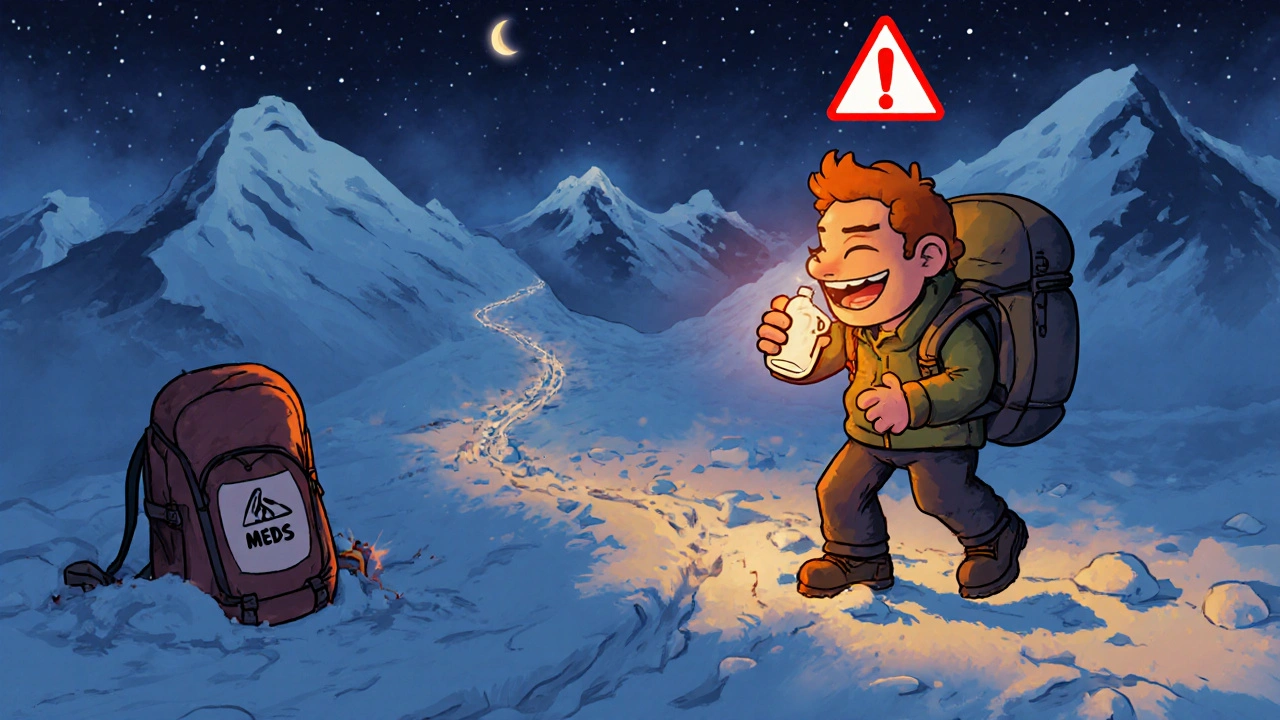Altitude Sickness Prevention: How to Stay Safe at High Elevations
When you climb above 8,000 feet, your body doesn’t get enough oxygen—and that’s when altitude sickness, a condition caused by low oxygen levels at high elevations that can lead to headache, nausea, and in severe cases, fluid in the lungs or brain. Also known as acute mountain sickness, it’s not just about being out of shape—it’s a physiological response your body can’t ignore. Many people think it’s just a bad hangover, but it’s not. It’s your body struggling to adapt to thinner air, and without the right steps, it can turn dangerous fast.
The most effective altitude sickness prevention, a set of practices and medical strategies to reduce the risk of developing symptoms when ascending to high elevations starts before you even leave home. Slow ascent is key. Going up too fast is the #1 mistake. Experts say don’t increase your sleeping altitude by more than 1,000 feet per day after 8,000 feet. If you’re flying into Denver or Cusco, give yourself at least two days to adjust before heading higher. Hydration helps, but it won’t fix the root problem. You need to train your body to use less oxygen, and that’s where acetazolamide, a prescription diuretic that speeds up acclimatization by increasing breathing rate and balancing blood pH. Also known as Diamox, it’s been used for decades by climbers, hikers, and even military personnel. It doesn’t mask symptoms—it helps your body adapt faster. You start taking it 1-2 days before you climb and keep going for a few days after reaching your highest point. It’s not a magic pill, but it’s one of the few things science has proven works.
Other strategies matter too. Avoid alcohol and sleeping pills—they slow your breathing when you need it most. Eat carbs, not heavy fats. Carbs need less oxygen to break down, so they give you more energy with less strain. Watch for warning signs: headache that doesn’t go away, dizziness, vomiting, or trouble breathing even at rest. If you see those, stop climbing. Descend. No exceptions. People think they can tough it out, but altitude sickness doesn’t care how strong you are. It’s not a challenge—it’s a warning. And if you’ve ever read about someone who got pulmonary or cerebral edema at high altitude, you know why this isn’t just about comfort.
The posts below cover exactly what you need to know before you go. You’ll find real comparisons between Diamox and other options, how to use it safely, what to avoid, and how your body reacts when oxygen drops. Some articles dive into the science behind why your lungs struggle up high. Others show how people have used these strategies on real trips—from the Andes to the Himalayas. No fluff. No guesswork. Just what works, backed by evidence and experience.
Prepare for altitude sickness and medication challenges on pilgrimages and treks with proven strategies, essential drugs like Diamox and dexamethasone, proper storage tips, and real-world advice from medical experts.

